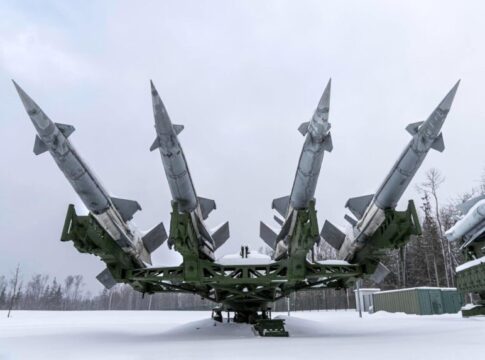Next-generation fighter jets are being developed with cutting-edge technologies to ensure superior capabilities on the modern battlefield. Two key areas of focus are stealth technology and advanced avionics. Let’s explore these aspects in more detail:
- Stealth Technology: Stealth is a critical feature in next-generation fighter jets, aiming to reduce the aircraft’s radar signature and enhance its survivability. Stealth features are incorporated into the design of the aircraft, including its shape, materials, and coatings. The goal is to minimize radar reflections and infrared signatures, making the aircraft harder to detect by enemy radars and missiles.
- Radar Cross Section (RCS) Reduction: Next-generation fighters use faceted designs, curved surfaces, and radar-absorbent materials to reduce their RCS. These measures help scatter and absorb radar waves, minimizing the aircraft’s detectability.
- Infrared Signature Management: Stealth fighters also employ techniques to reduce their infrared signature, making them harder to track using heat-seeking missiles. Advanced materials, cooling systems, and exhaust nozzle designs are utilized to lower the aircraft’s thermal emissions.
- Advanced Avionics: Next-generation fighter jets are equipped with advanced avionics systems that enhance situational awareness, provide advanced sensors and capabilities, and enable network-centric operations. Here are some key features:
- Active Electronically Scanned Array (AESA) Radars: AESA radars provide improved target detection, tracking, and identification capabilities. They offer greater range, higher resolution, and the ability to simultaneously perform multiple tasks, such as air-to-air and air-to-ground operations. AESA radars can also function as electronic warfare systems, providing jamming and countermeasures capabilities.
- Sensor Fusion: Next-generation fighters integrate data from multiple sensors, such as radar, infrared, and electronic warfare systems. Sensor fusion algorithms process and combine this data to provide a comprehensive situational picture, enabling pilots to make informed decisions in real-time.
- High-Speed Data Links: Advanced communication systems enable seamless data sharing and network-centric operations. These data links facilitate real-time information exchange between multiple aircraft, ground stations, and other platforms, enhancing situational awareness and coordination.
- Helmet-Mounted Displays (HMDs): HMDs present critical flight and mission data directly in the pilot’s field of view, eliminating the need to look down at traditional instrument panels. This allows pilots to maintain situational awareness while focusing on the outside environment.
- Advanced Flight Control Systems: Next-generation fighters feature advanced fly-by-wire flight control systems, which provide precise control, stability augmentation, and automated flight capabilities. These systems incorporate artificial intelligence algorithms to optimize aircraft performance and handling.
- Stealthy Communications: Advanced encryption and anti-jamming technologies ensure secure and reliable communications between the aircraft and other platforms.
Next-generation fighter jets combine stealth technology with advanced avionics systems to provide enhanced capabilities in terms of survivability, situational awareness, and mission effectiveness. These technologies enable pilots to operate in contested environments, gather critical intelligence, engage targets with precision, and collaborate effectively with other platforms, maximizing the fighter’s operational effectiveness on the modern battlefield.








